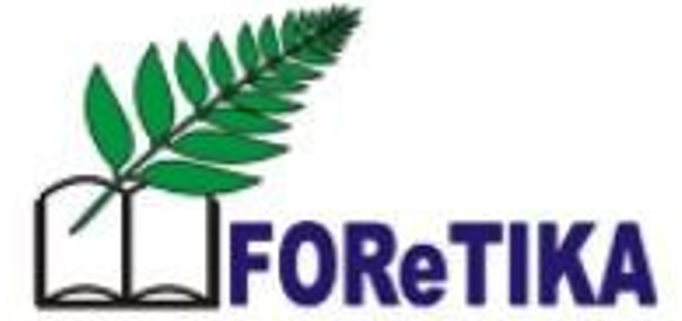ESTIMASI POPULASI DAN KARAKTERISTIK HABITAT LUTUNG JAWA(Trachypithecus auratus E. Geoffroy Saint-Hilaire, 1812) DI RESORT BANDEALIT TAMAN NASIONAL MERU BETIRI
DOI:
https://doi.org/10.22219/avicennia.v1i2.7678Keywords:
Javanese Lutung, Population, HabitatAbstract
Changes in forest areas into agricultural areas and settlements cause the loss of some natural habitats, thus threatening the sustainability of the Javanese Lutung population. One of the Javanese Lutung habitats, Meru Betiri National Park. The purpose of this study was to determine the estimated population of Javanese Lutung and Javanese Lutung habitat characteristics in the Bandealit Resort of Meru Betiri National Park. Habitat characteristics were obtained through analysis of vegetation data, environmental data, and data on feed types by calculating the Important Value Index (INP) and its relation to environmental conditions in each habitat type. Population differences and habitat characteristics in each habitat type are obtained through Analysis of Variance (Anova) using SPSS (Statictical Program for Social Science) software. The results showed that the estimated population of Javanese Lutung in Meru Betiri National Park was 104 individuals found in 11 groups in all habitat types where each group consisted of 6-18 individuals. Components that have a real influence on each habitat type are temperature and humidity.
Downloads
References
Alikodra, H. S. 2002. Pengelolaan Satwaliar (Jilid 1). Bogor: Fakultas Kehutanan Institut Pertanian Bogor.
Arief, A. A. 2001. Hutan dan Kehutanan. Penerbit Kanisius. Yogyakarta.
Ayunin, Q. 2013. Seleksi habitat Lutung Jawa di Taman Nasional Gunung Merapi. Tesis S-2. Program Pasca Sarjana Fakultas Kehutanan UGM. Yogyakarta.
Bismark, M. 2011. Prosedur Perasi Standar (SOP) Untuk Survey Keragaman Jenis Pada Kawasan Konservasi. Kementerian Kehutanan dan ITTO. Bogor.
Cowlishaw, G and R Dunbar. 2000. Primate Conservation Biology. The University of Chicago Press. Chicago.
Isabirye B, M Gilbert and SL Jeremiah. 2008. Primate population and their interaction with changing habitat. International Journal of Primatology 29, 35-48.
IUCN (International Union for Conservation of Nature). 2016. Trachypithecusauratus. http://www.iucnredlist.org/details/2203/0. Diakses pada 3 Januari 2016.
IUCN. 2016. IUCN Red List of Threatned Species. www.iucn.redlist.org. (Downloaded on 19 November 2016)
Marsh, LK. 2003. Primates in Fragments, 503-523.Ecology and Conservation Kluwer. Academic/plenum Publishers, New York.
Malone, MN ,A Fuentes, AR Purnama and IMWA Putra. 2003. Displaced hylobatids: biological, cultural, and economic aspects of the Primate trade in jawa and bali, indonesia. Tropical Biodiversity 8(1), 41- 49.
Newsome D, D Ross and M Susan. 2005. Wildlife Tourism Aspects Of Tourism, 152. Channel View Publications. Clevedon. Buffalo. Torronto.
Pudyatmoko, S. 2007. Riset dan Manajemen Satwaliar. Fakultas Kehutanan. Universitas Gadjah Mada. Yogyakarta.
Soerianegara I dan Indrawan A. 1998. Ekologi Hutan Indonesia. Fakultas Kehutanan. Institut Pertanian Bogor. Bogor
Sulistyadi E. 2013. Perilaku Lutung Jawa (Trachypithecus auratus E.Geoffroy, 1812) Pada fragmen Habitat Terisolasi di TWA Gunung Pancar. Institut Pertanian Bogor, Sekolah Pascasarjana. Bogor.
Supriatna, Jatna dan Wahyono, Edy H. 2000. Panduan Lapangan Primata Indonesia. Yayasan Obor. Jakarta.
Surat Keputusan Menteri Kehutanan Nomor: 277/Kpts-VI/1997 tanggal 23 Mei 1997.
Nadler T, Momberg F, Dang NX, Lormee N. 2002. Leaf monkeys. Vietnam Primates Conservation Review-Part 2 [internet]. [diunduh pada 4 Maret 2017] Tersedia pada: http://www.fauna-flora.org.
Downloads
Published
Issue
Section
License
Authors who publish with this journal agree to the following terms:
- Authors retain copyright and grant the journal right of first publication with the work simultaneously licensed under a Creative Commons Attribution License that allows others to share the work with an acknowledgement of the work's authorship and initial publication in this journal.
- Authors are able to enter into separate, additional contractual arrangements for the non-exclusive distribution of the journal's published version of the work (e.g., post it to an institutional repository or publish it in a book), with an acknowledgement of its initial publication in this journal.
- Authors are permitted and encouraged to post their work online (e.g., in institutional repositories or on their website) prior to and during the submission process, as it can lead to productive exchanges, as well as earlier and greater citation of published work (See The Effect of Open Access).











